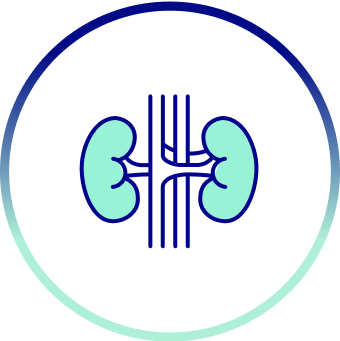KAPRUVIA® HAS AN ACCEPTABLE SAFETY PROFILE AND IS GENERALLY WELL TOLERATED1
Adverse reactions attributed to the treatment with KAPRUVIA® in haemodialysis patients:2
| System class | Adverse reaction | Frequency* |
|---|---|---|
| Psychiatric disorders | Mental status changes† | Uncommon |
| Nervous system disorders | Somnolence Paraesthesia‡ Dizziness Headache |
Common Common Uncommon Uncommon |
| Gastrointestinal disorders | Nausea Diarrhoea |
Uncommon Uncommon |
Somnolence2
The vast majority of these events were mild or moderate in severity. Somnolence occurred within the first 3 weeks of treatment and tended to subside with continued dosing. The likelihood of somnolence may increase when difelikefalin is concomitantly used with other medicinal products.¶
Dizziness2
The vast majority of these events were mild or moderate in severity. Dizziness occurred within the first 9 weeks of treatment and tended to subside with continued dosing. The likelihood of dizziness may increase when difelikefalin is concomitantly used with other medicinal products.¶
Mental status change†2
The vast majority of these events were mild or moderate in severity.
KAPRUVIA® HAS A LOW LIKELIHOOD OF DRUG–DRUG INTERACTIONS2

Exhibits low plasma protein binding, which limits the potential for displacement of other highly protein-bound drugs2

Is not a substrate, inhibitor of major drug transporters or inducer of major cytochrome P450 enzymes, which limits the potential for drug–drug interactions

Is predominantly excreted unchanged by the kidney, with no evidenced metabolism by the liver2
STUDIES OF KAPRUVIA® DEMONSTRATED NO ABUSE POTENTIAL AND NO SIGNS OF PHYSICAL DEPENDENCE3,4

No adverse events (AEs) of euphoria, hallucinations or dysphoria were observed in the Phase 3 (KALM-1) and Phase 2 (CLIN2101) studies of KAPRUVIA® in HD patients with moderate-to-severe pruritus3,4

No signs of potential physical
dependence or AEs related to withdrawal
were observed in the Phase 3 (KALM-1) study of KAPRUVIA® in HD patients with moderate-to-severe pruritus.*
Physical dependence was measured
using ShOWS† and OOWS‡3




